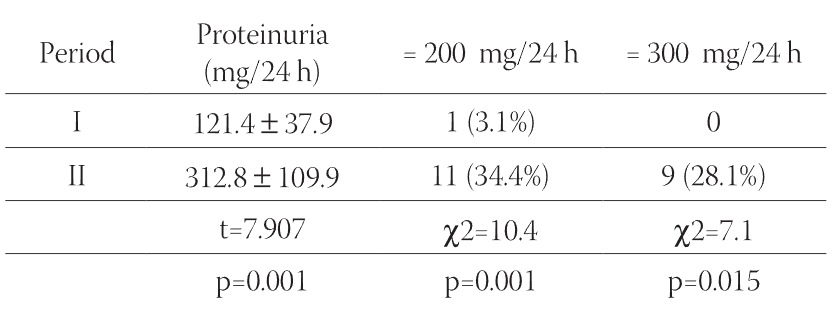Development of Microvascular Complications in Type 1 Diabetic Patients 10 Years Follow-up
DOI:
https://doi.org/10.17305/bjbms.2006.3171Keywords:
type 1 diabetes, insulin regimen, nephropathy, retinopathyAbstract
Microvascular diabetic complications are the most common causes of morbidity and mortality of patients with type 1 disease. Diabetic nephropathy is becoming the single most common cause of end stage renal failure, while diabetic retinopathy is the most common cause of blindness in working-age population. The main aim of the study was to evaluate the progression of late microvascular complications in type 1 diabetic patients treated by conventional or intensified insulin regimen over the period of 10 years. We selected a random sample of 32 patients, including 14 males and 18 females, aged 30,6 +/- 11,8 years, with average duration of the disease of 4,8 +/- 3,2 years. They did not show signs of overt diabetic nephropathy, while 5 patients had background retinopathy. All the patients had their fasting and postprandial glycaemia, HbAlc, 24/hour proteinuria, blood pressure, height and weight measured and body mass index calculated (BMI). There was a trend towards increasing values of HbAlc (6.9 +/- 0.8 vs. 7.4 +/- 1.0 %, p < 0.05), fasting glycaemia (6.8 +/- 08 vs. 7.8 +/- 1.2 mmol/l, p < 0.05), postprandial glycaemia (9.2 +/- 1.5 vs. 11.3 +/- 1.9 mmol/l, p <0.01), systolic and diastolic blood pressure values (120.0 +/- 10.8 vs. 128.5 +/- 16.8 mmHg, p<0.05; and 73.4 +/- 8.1 vs. 79.8 +/- 9.8 mmHg, p< 0.05) although no hypertensive patient was diagnosed. There were 11 persons (34.4%) with persistent proteinuria of 200 mg/24 hour or more and significant difference in overall proteinuria in 10 yrs period (121.3 +/- 37.3 vs. 312.8 +/- 109.9 mg/24 h, p< 0.001). Overall, 9 persons (28.1%) were diagnosed with simple, background retinopathy, but 6 of them (18.8%) had signs of proliferative form of the disease. The results indicate significant changes in progression of proteinuria in both groups although retinopathic progression was observed but was not significant in the intensively treated group.
Citations
Downloads

Downloads
Published
Issue
Section
Categories
License
Copyright (c) 2018 Bosnian Journal of Basic Medical Sciences

This work is licensed under a Creative Commons Attribution 4.0 International License.
How to Cite
Accepted 2018-02-11
Published 2006-05-20









